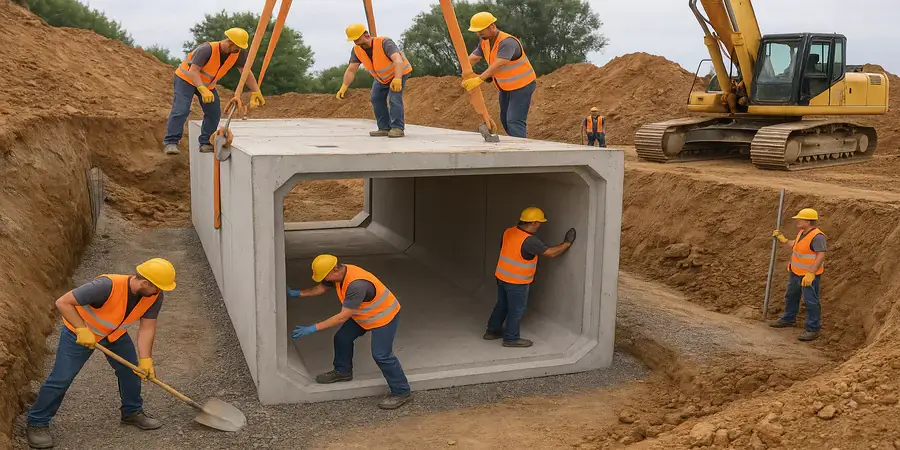Regular maintenance is required for heavy-duty tasks such as large box culverts. It’s required, not only beneficial. Failing to act appropriately could lead to delays or serious problems with broken infrastructure. Keeping things in order as you go will help you to save time and a great deal of worry. This blog will show you how to maintain excellent condition of big box culverts all through the building phase.
1. Start With Proper Site Prep
Do not hurry when you are digging or levelling, instead, pay close attention to the soil and make sure the base is stable and well packed down. No matter how strong the concrete is, the tunnel won’t hold up if the base isn’t right. Get rid of any trash, roots, or other things that might affect the tree’s long-term security. Additionally, keep an eye out for soft spots or pools of water that show bad draining.
2. Keep the Flow in Mind
Remove water from the job area by using temporary diversion channels or bypass systems. That helps keep the building from falling apart and stops erosion. However, if the water starts to flow before you’re ready, the pressure could move things around or make them settle in the wrong places. Aside from that, you should make plans for storms since it doesn’t take much rain to make things worse.
3. Protect the Structure During Each Phase
Although it’s tempting to think the job is half done once the first pieces are in place, that’s where the real work starts. As you add more pieces, ensure that each one stays stable and straight. Don’t put things close together that could move and hit something. As you go, keep an eye out for cracks, especially at the corners and joints. When you notice damage early on, it’s easier to fix before it gets worse.
4. Maintain Equipment and Access Routes
Damage can happen quickly if big trucks and other heavy equipment roll over soft ground or close to culverts that aren’t covered. You should keep the tools away from areas that aren’t supported, and don’t put extra weight near parts that have just been put in place. That’s why when loose materials or concrete are split, they can pile up and block important passageways, which slows everything down.
5. Don’t Skip Joint Inspections
The gaps between the pieces must be smooth, level, and able to keep water out. When you’re short on time, it’s easy to want to rush these, but even the smallest hole can let water in or move things around. Make it a habit to check each new piece for alignment and seal. Furthermore, long-term problems like internal deterioration or joint separation can’t happen because of this small yet important step.
6. Monitor for Shifting or Settling
Setting down roots can happen days or even weeks after the first planting. Check the readings often to keep an eye on the alignment. Any dips, tilts, or shifts could mean that the base needs to be strengthened. AYou need to address the issue quickly with fill adjustment or shoring if the building starts to lean or sink. Keep in mind that if you wait too long to fix a shift, it will take more time and work to fix.
Master Every Phase of Your Box Culvert!
Follow these box culvert maintenance processes from excavation to backfill. Each phase changes strength and durability. With careful planning, your culvert will withstand tremendous loads and changing weather for years. In addition, control what you can during building to avoid complications.














